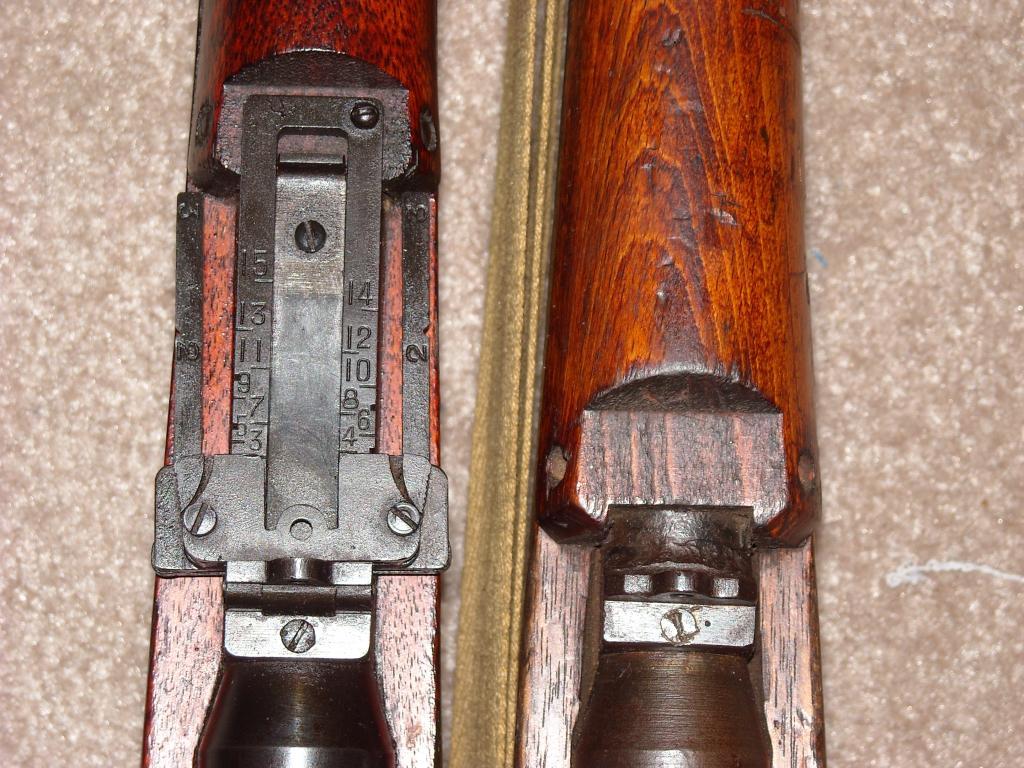
The joint in the stock has started to separate but is not loose. The two piece butt-stock has a semi-cupped butt-plate. Sling swivels are mounted on the mid-band and the LHS of the butt-stock. Magazine floor-plate release within trigger guard. The trigger guard seems to be just a shaped piece of fairly thick steel with no attention to finish or detail to it.

The trigger guard and actual trigger are equally basic. There is no dust-cover over the action, same reasoning applies. The rear sight is also devoid of its anti-aircraft wings – not unusual again buy this stage of the war. These rifles are often encountered without their monopods but it is also the fact that by this time in the war, not all of them were issued with one in the first place. The front nose cap looks the same and has a hole drilled for the cleaning rod, but problem is, there is no drilling within the stock to allow a rod to stow. Moving backwards everything seems to be ok. It is purely an inverted “V” on a block – no attempt to protect that front sight has been made. Simple single gas escape hole in top of receiver.Īnother last ditch feature is the lack of guards about the front sight. In actual fact it is just a crudely welded rear face with no attempt to clean up the face to make it smoother or neater – typical of last ditch rifles. The rear face of the bolt is completely devoid of any geometric machine design.
#Type 99 arisaka front barrel band serial#
The bolt has the only other marks visible on the rifle and they are the last three numbers of the serial number, but, they are over-stamped to match. (further research could be carried out) The receiver bridge has had the Chrysanthemum removed but the Japanese “Type 99” markings are still intact. Between that and the bolt release are some other smaller markings which are hard to determine.

“95839” The main marking is the manufacturers mark symbolising the Kokura /Tokyo Arsenal.
#Type 99 arisaka front barrel band series#
Read from left to right it has the series marking which is 24th. The side of the receiver is marked with manufacturers marks and the serial number. This could of course been a soldier who brought the rifle back.

The Rising Sun should have 16 rays of alternating red and white design this one has lost three rays somewhere in translation! I believe this is strong indication that someone who did not bear the flag any allegiance, actually drew it. It is rather telling that the flag, is in-fact, not correct. Beside the flag are some Japanese characters – meaning unknown. The finish to the stock is the original lacquer with a version of the rising sun Japanese flag painted onto the RHS of the butt.

Stocked for all but 4″ of the barrel length with a handguard over the barrel in a local timber with finger grooves in the fore-end. The round, originally blued barrel is 25.1/2″ long and the trigger pull measures 12.1/2″ to center. This Type 99 Arisaka measures 44″ in overall length, so this is the Short pattern rifle. Detail and attention to finish have been dropped in favour of getting the rifles out quickly in defence of the homeland. Japan’s back was against the wall by this stage in the war and rifles were being produced with time and money cutting procedures becoming more important with every day that passed. Although basic, the design of these simple bolt action repeaters was very sound. Mauser-type bolt system with internal five-shot magazine.


 0 kommentar(er)
0 kommentar(er)
